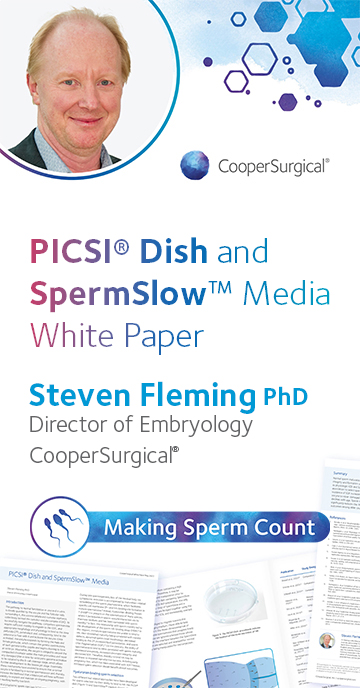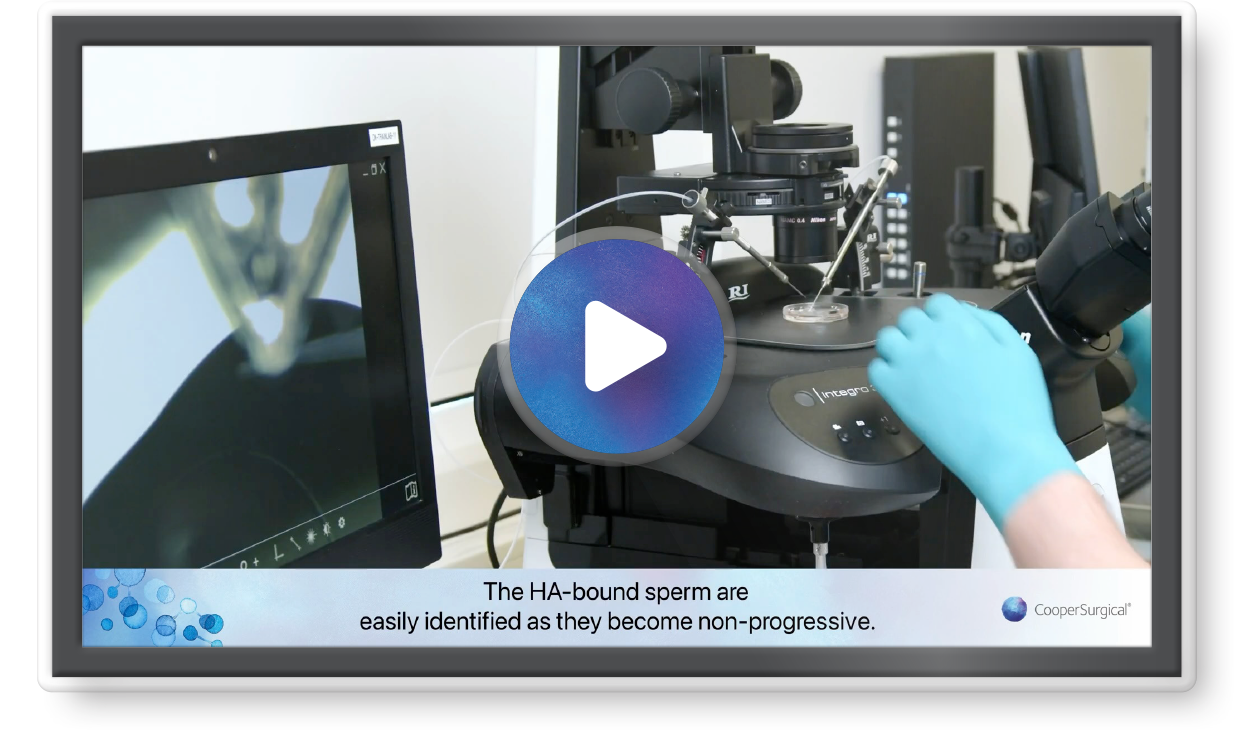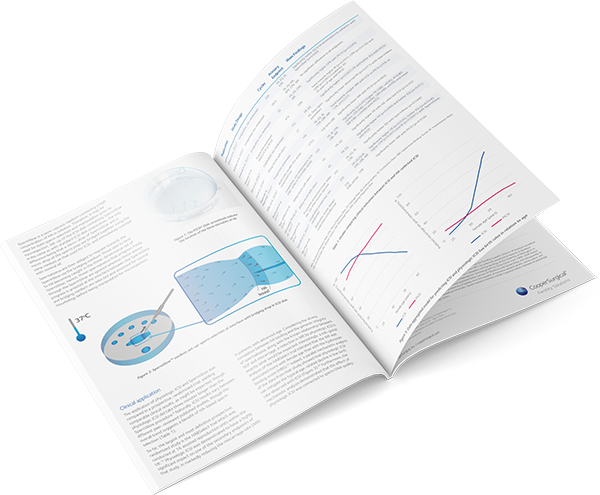Watch the video below to learn how to prepare a PICSI Dish
In this video, Dave Morroll PhD, Director of Clinical Support at CooperSurgical, demonstrates the important process of preparing a PICSI® dish for sperm selection.
Sperm preparation techniques enable the isolation of a fraction containing a high percentage of morphologically normal and motile cells, with reduced DNA damage, from the neat semen sample.
However, none of those techniques is capable of completely removing DNA-damaged sperm. During the standard ICSI procedure there is always a risk of injecting a sperm with impaired DNA into the oocyte, as there are no specific tools to check whether the sperm DNA is intact. There is an added level of uncertainty if you know the patient has an increased DNA fragmentation level.
CooperSurgical’s PICSI® dish is an innovative solution to these types of intricacies, requiring minimal changes to your existing ICSI procedures – and can be easily implemented into your clinical practice.
The PICSI® dish allows for selection of single mature spermatozoa with increased chances of DNA integrity, proper DNA packaging and lower risk of aneuploidy.1,2
Remember these important considerations when preparing your PICSI Dish
- Hyaluronan (HA) dots have to be rehydrated before use
- The purpose of the elongated drop is to allow sperm to migrate from the far end to the HA dot, allowing sperm selection before the HA dot becomes too congested with sperm
- When using poor sperm samples, more sperm can be added or, in the worst cases, the sperm suspension itself can be dispensed directly over the HA dot to rehydrate it
- Remember not to prepare dishes too far in advance – the HA will rehydrate and expand but may eventually lift off the dish surface
- It is recommended that the media, oil and dish be pre-warmed. Then the dish should be prepared, re-warmed and used within 90 minutes
References
1. Parmegiani L, Cognigni GE, Ciampaglia W, Pocognoli P, Marchi F, Filicori M. Efficiency of hyaluronic acid (HA) sperm selection. J Assist Reprod Genet. 2010 Jan;27(1):13-6.
2. Huszar G, Ozkavukcu S, Jakab A, Celik-Ozenci C, Sati GL, Cayli S. Hyaluronic acid binding ability of human sperm reflects cellular maturity and fertilizing potential: selection of sperm for intracytoplasmic sperm injection. Curr Opin Obstet Gynecol 2006;18:260–267.
3. West R, Coomarasamy A, Frew L, Hutton R, Kirkman-Brown J, Lawlor M, Lewis S, Partanen R, Payne-Dwyer A, Román-Montañana C, Torabi F, Tsagdi S, Miller D. Sperm selection with hyaluronic acid improved live birth outcomes among older couples and was connected to sperm DNA quality, potentially affecting all treatment outcomes. Hum Reprod. 2022 May 30;37(6):1106-1125.
4.Scaruffi P, Bovis F, Casciano I, Maccarini E, De Leo C, Gazzo I, Massarotti C, Sozzi F, Stigliani S, Anserini P. Hyaluronic acid-sperm selection significantly improves the clinical outcome of couples with previous ICSI cycles failure. Andrology. 2022 May;10(4):677-685.

 My Clinic is in the United States
My Clinic is in the United States My Clinic is in Canada
My Clinic is in Canada


